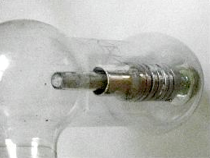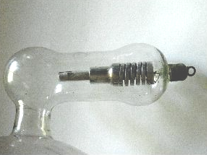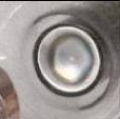The “NitroKen” Nitrogen Tube
Ref. B24






This is composed of two electrode tubes: cathode and anti-cathode. No independent anode.
It is 22” (55cms) long and 7” (17.5cms) bulb, made by the “X-ray TUBE Co. N.Y.”, with patent dates 1911, 1912, 1913 and 1915 etched on the side and the back of the massive copper anticathode embedding the Tungsten target.
Hereafter, a description of this tube and of its regeneration device by Sinclair Tousey, MD, from his book “Medical Electricity, Röntgen Rays and Radium” 3rd Edition, W.B.Saunders Co., 1921, p 768:
“….The residual gas is nitrogen and this is also liberated from the materials in the regulator when the vacuum is to be lowered. Experiments by A.Mutscheller (Principles for the use of Röntgen Rays, New York, 1917) show that nitrogen shows the least tendency to combine with the electrode metals most commonly used, and it is selected therefore as the residual gas for the NitroKen tube. This shows a dense yellowish-green fluorescence. Its regulator contains nitrites of thorium, aluminium and barium which when heated liberate nitrogen, and they tenaciously hold other gases such as oxygen and hydrogen.
In regulating, if the vacuum becomes a little lower than normal the current passes through the vacuum to a wire leading to the anode, and no longer through the regulating substance.
The NitroKen tube is claimed to be practically inexhaustible, but an inconvenience is that the vacuum always becomes too high after exposure and requires reduction when used again. The advantages claimed are great constancy of vacuum during prolonged or heavy exposure and that no seasoning is required”.